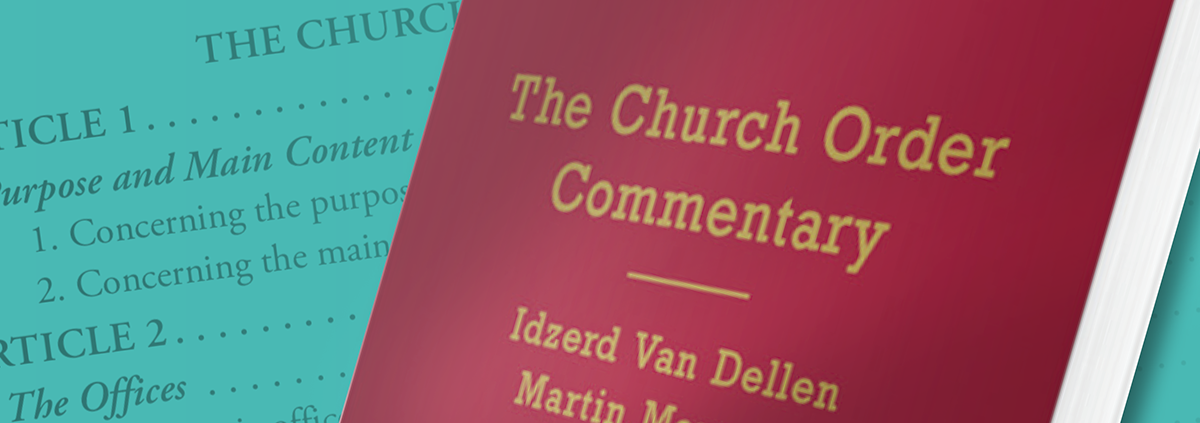The Idea of the Church Order
One of the main instruments for the proper exercise of church polity is a Church Order, more precisely in our context, the Church Order of the United Reformed Churches in North America. This Church Order can be easily accessed at the United Reformed Churches in North America website, www.urcna.org, underneath the Documents tab. It can also be easily printed. Every office bearer and professing member of the churches would do well to have quick access to it. The Church Order is designed and adopted “for the maintenance of good order in the Church of Christ [as a] means to regulate ecclesiastical life reasonably and with full maintenance of the rights of every congregation and of the individual members of the Churches.” So write Idzerd van Dellen and Martin Monsma in The Church Order Commentary—another reference tool every office bearer does well to have for quick access. This purpose was summarized in older versions of the Church Order in an opening article that stated, “For the maintenance of good order in the Church of Christ it is necessary that there should be: offices, assemblies, supervision of doctrine, sacraments and ceremonies, and Christian discipline; of which matters the following articles treat in due order.” It could be added that this good order is important, “for God is not the author of confusion but of peace, as in all the churches of the saints” (1 Cor. 14:33). The Church Order is designed to preserve the peace of the churches through biblical church polity.
The History of the Church Order
The concept of a codified Church Order is not a recent or novel idea. As the Protestant Reformation took hold, one area of reformation was in regards to church polity or church government. As this reformatory work spread into The Netherlands, the Dutch churches quickly adopted Church Orders at their broader assemblies throughout the sixteenth and seventeenth centuries. The most notable of these Church Orders was the one adopted formally by the famous Synod of Dort in 1618–1619. Its basic principles and essential contents remain the structural backbone for the Church Orders of those churches that claim Dutch ancestry, including the Christian Reformed Church in North America and the United Reformed Churches in North America.
The Principles of the Church Order
The Church Order is built by collective sanctified wisdom through the broadest assemblies of the churches. This collective sanctified wisdom identifies scriptural principles through biblical teaching and then fleshes out the practices of the churches in four key areas: the offices, assemblies, functions and tasks, and discipline of the church. Order within these four areas of church life serves for an orderly and peaceful church life. Disorder within these four areas of church life serves for a disorderly and strife-filled church life. The Church Order is not a moral law with “rule upon rule and precept upon precept.” It is rather marked by brevity and seeks to respect the freedom of the local congregation and individual believer. However, it is authoritative rather than merely suggestive by means of the churches of a denomination or federation willingly covenanting together with unity in doctrine and in practice for, to quote Van Dellen and Monsma once again, “The Church Order consists of rules and regulations mutually agreed upon, and that by common consent.“
The Church Order Commentary
by Idzerd van Dellen and Martin Monsma is available from Reformed Free Publishing Association for $39.95. A preview can be accessed at the website: https://rfpa.org/products/the-church-order-commentary?_pos=2&_sid=682cc38fb&_ss=r

Rev. Greg Lubbers is currently serving as Minister of the Word and Sacraments at Covenant Reformed Church (URCNA) in Pella, IA.
